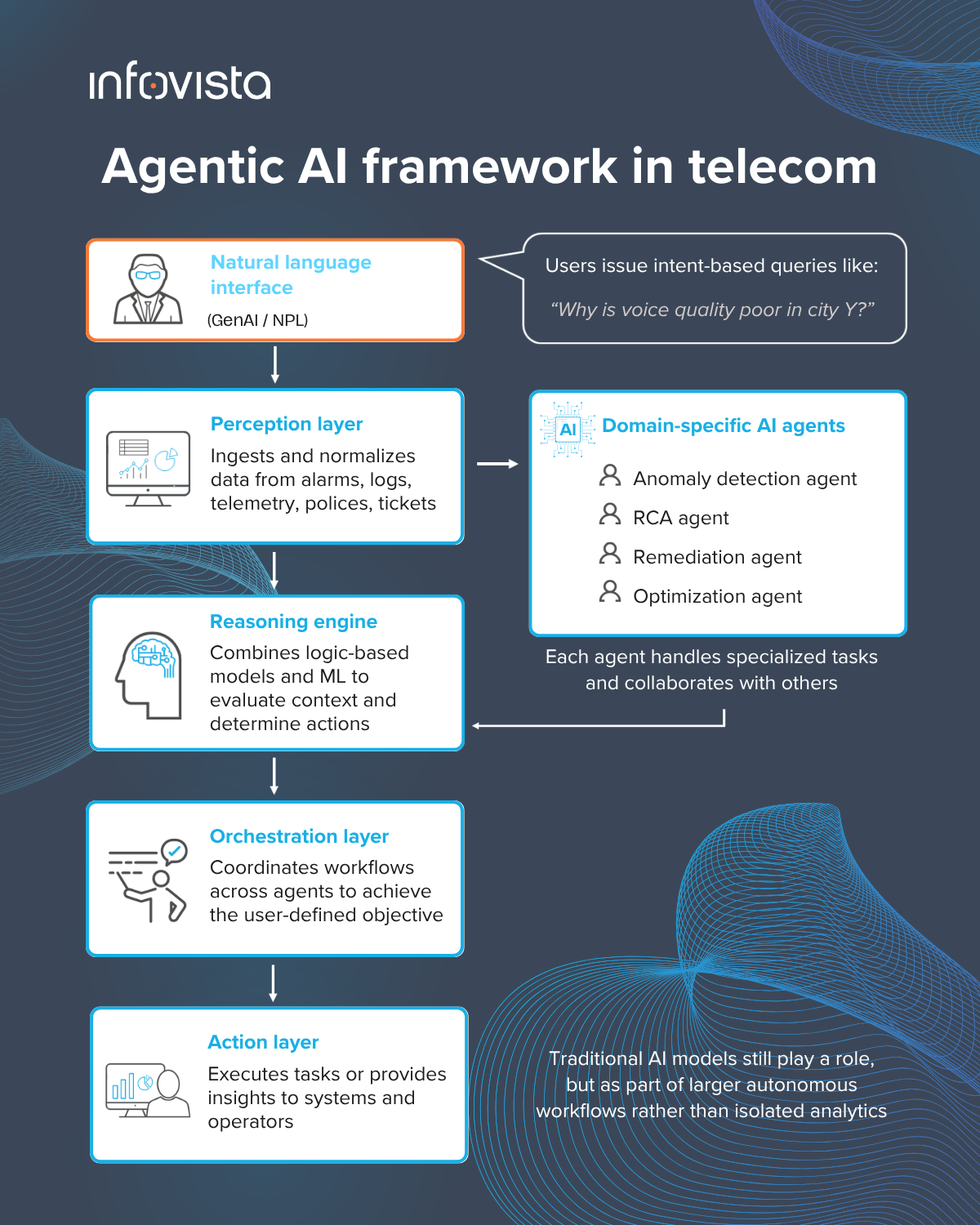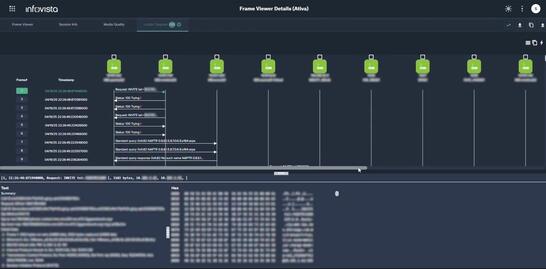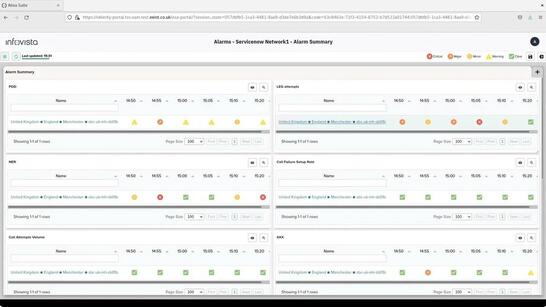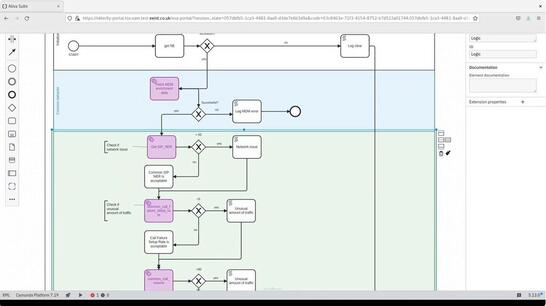Agentic AI in telecom is changing the way networks are managed, optimized, and assured. Telecom operators have long used rule-based automation, traditional AI models, and more recently, Generative AI (GenAI) to simplify complex operations. These tools work well when processes are stable and predictable. But today’s networks are anything but static. They span multiple domains, shift constantly, and demand faster, more intelligent decision-making. Here’s where Agentic AI steps in.
What is Agentic AI in telecom?
Agentic AI in telecom represents a new level of AI-powered automation. Instead of relying on rigid scripts or fixed workflows, it introduces AI agents across telecom operations that can understand intent, reason across systems, and act on their own.
These agents analyze situations, plan multi-step workflows, and learn from outcomes to make better decisions over time. By combining Generative AI (GenAI), natural language processing (NLP), and adaptive orchestration, Agentic AI enables to start building truly autonomous networks that, rather than reacting to alarms or isolated events, become proactive and cross-domain, aligning actions directly with business outcomes.
This shift helps operators reduce operational costs, improve SLA compliance, and respond more quickly to new network demands.

Enabling technologies behind Agentic AI
Agentic AI is powered by several key technological advancements that have matured in recent years:
Large language models allow AI agents to understand operator intent expressed in natural language. Instead of complex interfaces or rigid scripts, engineers can issue queries like "Investigate video degradation in Region A", which the system interprets and translates into actionable tasks for agents.
Unlike static machine learning (ML) models, reinforcement learning enables AI agents to continuously learn from outcomes. As agents execute tasks, they receive feedback that helps refine decision- making, improving performance over time.
Modern telecom networks increasingly rely on cloud-native, software-defined infrastructure. This flexibility allows AI agents to scale dynamically, operate across distributed domains, and access real-time data streams.
Open, API-based architectures enable seamless integration between AI agents and existing OSS, BSS, NMS, and IT systems. Modular orchestration frameworks coordinate multiple agents, ensuring that tasks stay aligned with operator goals while managing dependencies across complex workflows.
The growing richness of real-time telemetry, logs, and event data across network domains provides the foundation that AI agents need to perceive, assess, and act with full situational awareness.
Discover how telcos are using Agentic AI to simplify data, drive automation, and monetize services
Join this expert panel session, hosted by Mobile Europe, to explore how telcos and enterprises are embracing Agentic AI, automation, and network intelligence to simplify data complexity, co-create value, and monetize differentiated services.
Hear from BT Business, China Telecom, ABI Search and Infovista.

Traditional AI & Automation vs. Agentic AI in Telecom
At its core, Agentic AI introduces AI agents in telecom that can think, plan, and act with far greater autonomy than earlier AI models combined with automation. These agents:
- Interpret intent: Instead of following predefined scripts, they understand requests like “investigate latency spikes” and determine the next steps independently.
- Plan and sequence actions: They organize complex, multi-step workflows, identify relevant data sources, correlate insights, and execute tasks accordingly.
- Learn and adapt: Through reinforcement learning and continuous feedback, they refine their reasoning and improve decision-making over time.
Telecom operational capabilities | Traditional AI + Automation | Agentic AI |
|---|---|---|
Decision-making model | Rule-based logic or static ML models | Intent-driven reasoning by autonomous agents |
Adaptability | Predefined behavior, low adaptability | Self-adaptive via reinforcement learning and context |
Scope of operation | Siloed (RAN, core, OSS, etc.) | Cross-domain and end-to-end orchestration |
Response to anomalies | Reactive (alarms trigger workflows or tickets) | Proactive (agents identify and resolve issues before impact) |
Workflow management | Hardcoded sequences or RPA flows | Self-directed planning and execution of multi-step tasks |
Human intervention | Frequent and necessary | Minimal; agents collaborate with humans like digital teammates |
Scalability | Constrained by static infrastructure and manual processes | Natively scalable via cloud-native and modular architectures |
Learning capability | Static ML models retrained periodically | Continuous learning and improvement through interaction |
Understanding of telecom context | Operates on thresholds, lacks contextual understanding | Understands SLAs, service hierarchies, topologies, KPIs |
Interface with systems | Point-to-point integrations | Multi-system orchestration (OSS/BSS/NMS/IT) via APIs and connectors |
Technology foundation | Rules, RPA, basic ML | Large language models (LLMs), reinforcement learning, agent-based architecture |
Outcome orientation | Task execution and automation | Customer and business outcome-driven reasoning |
How the Agentic AI framework works in telecom
At the core of Agentic AI is a modular, layered agent-based architecture built around AI agents that perceive, reason, and act. All in real time. Rather than functioning as isolated tools, in telecom, these agents collaborate across domains to deliver autonomous network operations.
Here’s how the Agentic AI framework comes together in telecom:
- AI agents: Specialized domain-specific agents handle distinct tasks, such as anomaly detection, RCA, optimization, or remediation. Each operates independently within its area of expertise, but they also coordinate as part of larger, multi-agent teams to deliver end-to-end outcomes.
- Perception layer: This layer continuously gathers and normalizes data from across the network (telemetry feeds, alarms, event logs, policy states, and ticketing systems) providing agents with the real-time visibility they need to assess network health.
- Reasoning engine: Acting as the system’s “brain,”, the reasoning engine blends logic-based models with ML to evaluate current conditions, identify possible actions, and determine the most effective next steps based on the operator’s intent.
- Orchestration layer: This layer oversees the coordination of multiple agents, ensuring that tasks are sequenced properly, dependencies are managed, and actions stay aligned with the operator’s business goals.
- Action layer: Once decisions are made, the action layer executes remediation steps directly on the network or delivers actionable recommendations to engineers or external systems.

- Generative AI (GenAI) and natural language processing (NLP) play a central role in this framework. Instead of navigating complex interfaces, engineers can issue natural language queries like: “Why is video quality degrading in Region X?”. The system interprets intent, breaks it into actionable tasks, and directs AI agents to investigate and resolve issues, often without human input.
- Classical ML models still contribute, but within Agentic AI, they act as components in a broader, intelligent workflow. No longer isolated, they help drive a context-aware system that bridges operator's intent with fully autonomous execution.
Agentic AI in telecom opens new possibilities across many domains. While assurance and operations are seeing some of the earliest gains, the potential extends far beyond. Main telecom use cases in which Agentic AI can make a difference include:
Agentic AI use cases
- Root cause analysis (RCA)
- Anomaly detection
- Trouble ticketing and remediation
- Change management
- SLA assurance
- Business insight automation

AI agents correlate data across RAN, core, transport, and cloud layers to identify causes of service issues much faster than traditional manual investigations.

AI agents correlate data across RAN, core, transport, and cloud layers to identify causes of service issues much faster than traditional manual investigations.

Continuous monitoring allows AI agents to detect unusual patterns, assess service impact, and proactively trigger responses before customers are affected.

Continuous monitoring allows AI agents to detect unusual patterns, assess service impact, and proactively trigger responses before customers are affected.

From generating enriched tickets with diagnostic data to recommending corrective actions, AI-powered automation streamlines the entire incident lifecycle.

From generating enriched tickets with diagnostic data to recommending corrective actions, AI-powered automation streamlines the entire incident lifecycle.

During upgrades or configuration changes, agents verify intended outcomes in real time, reducing risks and improving rollout confidence.

During upgrades or configuration changes, agents verify intended outcomes in real time, reducing risks and improving rollout confidence.

AI agents continuously monitor service KPIs against SLA targets, ensuring proactive compliance and minimizing breach risks.

AI agents continuously monitor service KPIs against SLA targets, ensuring proactive compliance and minimizing breach risks.

By connecting network data with customer and commercial insights, Agentic AI helps marketing and product teams better understand how offers and policies affect customer experience.

By connecting network data with customer and commercial insights, Agentic AI helps marketing and product teams better understand how offers and policies affect customer experience.
Agentic AI adoption challenges CSPs need to address
While Agentic AI in telecom holds enormous promise, deploying these systems at scale brings real challenges that operators must carefully manage. The main ones are:
- Data availability and quality: AI agents depend on continuous access to accurate, real-time data across multiple domains. In many networks, data still resides in legacy, fragmented systems, or suffers from inconsistencies that can compromise decision-making. Building reliable, unified data pipelines is critical for agents to perceive network conditions accurately.
- System integration across domains: Traditional OSS, BSS, NMS, and IT systems were not designed with agent-based orchestration in mind. Seamless integration requires open APIs, standardized interfaces, and a strong middleware foundation to allow AI agents to coordinate actions across RAN, core, transport, and IT domains without introducing new operational friction. As multi-agent systems emerge, support for agent communication protocols such as the Model Context Protocol (MCP) becomes critical to ensure agents can share context and collaborate effectively.
- Trust, explainability, and governance: For many operators, fully autonomous AI-powered automation still raises questions around trust. Telecom teams need confidence that AI agents will make safe, transparent decisions. Ensuring explainability (the ability to trace how decisions were made) along with robust governance frameworks, becomes essential as control shifts from human operators to AI agents in telecom.
- Organizational upskilling & change management: Introducing Agentic AI is not only a technology shift; it demands new skills, new roles, and a cultural shift toward greater reliance on automation. Teams must adapt to collaborating with digital colleagues: supervising AI agents, managing exceptions, and evolving from task execution to strategic oversight. CSPs need a solid AI strategy to automate network operations.
Infovista’s framework for Agentic AI-powered autonomous networks
Agentic AI is central to helping telecom operators simplify network complexity, automate operations, and unlock the value of data.
Infovista’s vision combines deep domain expertise with advanced AI-powered automation to deliver practical, business-driven outcomes.
Here are the 3 main pillars in which our Infovista’s Agentic AI framework is built:
- Transform network operations
Enable intent-driven assurance where natural language requests are instantly translated into automated tasks. GenAI-powered agents streamline decision-making, automate RCA, and proactively improve SLA compliance, driving higher network performance and operational efficiency.
- Drive innovation and efficiency
Break down data silos across the full network lifecycle, from planning and testing to assurance and monetization. With 360° observability across domains, technologies, and services, operators gain unified, real-time intelligence to support network autonomy and service innovation.
- Deliver exceptional customer experiences
Harmonize network and business operations through GenAI-powered data democratization and integrated OSS/BSS orchestration. This enables highly personalized services that exceed customer expectations and opens new monetization opportunities.
Agentic AI solutions to automate telecom operations
Discover Infovista’s suite of tools to empower your network performance and autonomy backed by Agentic AI, GenAI and AI-powered automation.
Ativa App
Enhance cross-domain visibility of subscriber-facing services across all network technologies
Ativa Net
Gain cross-domain visibility of network resources and infrastructure performance
Ativa Experience
Get full cross-domain visibility of perceived subscriber experience, including deep packet analysis
Ativa Automated Ops
Benefit from zero-touch configuration with AI/ML-driven predictive analytics and workflow automation
Get started with Agentic AI
Take a step forward to autonomous networks with Infovista's Agentic AI framework.
Agentic AI in telecom FAQs
Agentic AI in telecom introduces specialized AI agents that understand intent, reason across domains, and autonomously execute tasks. Unlike traditional rule-based automation, Agentic AI adapts in real-time, coordinating complex workflows across network and business systems.
Generative AI (GenAI) enhances Agentic AI by enabling natural language understanding. Operators can issue requests in plain language, which GenAI-powered agents interpret, plan, and translate into multi-step automated actions, closing the gap between operator intent and network execution.
Agentic AI helps telecom operators reduce operational complexity, accelerate decision- making, improve SLA compliance, and deliver more personalized customer experiences. By breaking data silos and coordinating actions across domains, it supports both operational efficiency and service innovation.
Traditional AI and automation rely on fixed rules and static models. Agentic AI introduces autonomous agents that plan, learn, and adapt continuously. Instead of reactive processes, it enables proactive, cross-domain orchestration aligned with business outcomes.
The shift toward Agentic AI is being driven by new technological capabilities that are finally becoming mature. The combination of LLMs, reinforcement learning, natural language processing, and modular AI orchestration frameworks is now making it possible to deploy agentic automation in telecom operations at scale.
Yes. Leading telecom operators are beginning to adopt Agentic AI frameworks, starting with use cases like automated RCA, intent-driven assurance, SLA compliance, and closed-loop service optimization. Adoption is typically phased, allowing trust and governance structures to evolve alongside automation maturity.
The shift to Agentic AI in telecom scenarios allows engineers to focus on decision-making while AI agents handle triage, RCA, and remediation. This results in faster MTTR, improved SLA compliance, and a more collaborative NOC environment.
Adoption starts by unifying real-time data across domains, enabling AI agents to access accurate information. Strong governance and explainability build trust in AI-driven decisions. Just as critical, teams need to shift roles, from manual troubleshooting to supervising AI agents and managing intent-driven automation. Success combines technical readiness with organizational change.
At the business level, GenAI in telecom drives real outcomes: lower OPEX, better customer experience, and scalable network operations.
Yes. In practical terms, AI agents in telecom function like digital teammates. They understand key network concepts like SLA metrics, topologies, and service KPIs; interface seamlessly with OSS/BSS systems, NMS platforms, and ticketing systems; and most importantly, deliver fully coordinated, end-to-end outcomes across domains.
Glossary of terms
- Agentic AI: A type of artificial intelligence where specialized agents can understand intent, reason across complex systems, plan actions, and execute tasks autonomously.
- AI Agents in Telecom: Software entities designed to handle specific network operations by continuously analyzing data, making decisions, and taking actions without manual intervention.
- AI Automation: The use of artificial intelligence to automate network tasks and processes, traditionally through rule-based systems or supervised machine learning models.
- Agent-Based Architecture: A modular system where multiple specialized AI agents work together, each focusing on specific tasks, to manage complex operations efficiently.
- Autonomous Networks: Networks that manage themselves, automatically detecting, diagnosing, and resolving issues while optimizing performance with minimal human oversight.
- Closed-Loop Automation: An automation process where systems continuously monitor performance, detect issues, and automatically adjust operations in real time without manual intervention.
- Data Democratization: Making data accessible across departments and systems to ensure all relevant teams and AI agents can use accurate, real-time information.
- GenAI (Generative AI): A form of artificial intelligence that generates new content or decisions, supporting natural language understanding and enhancing AI-driven decision-making.
- Intent-Based Networking: A network management approach where operators define desired outcomes, and the system automatically translates those objectives into the necessary configurations and actions.
- LLM (Large Language Model): An advanced AI model trained on vast amounts of text data to understand and generate natural language, enabling human-like communication with systems.
- MCP (Model Context Protocol): A protocol that enables AI agents to share contextual information, allowing them to coordinate actions and collaborate effectively across different domains.
- NLP (Natural Language Processing): The technology that allows AI systems to interpret, understand, and respond to human language inputs naturally and accurately.
- Observability: The capability to continuously collect, analyze, and act on data from all parts of the network, providing full visibility into system performance.
- RCA (Root Cause Analysis): The process of identifying the underlying causes of network issues by correlating data from multiple sources to pinpoint the source of problems.
- RPA (Robotic Process Automation): Technology that automates routine, repetitive tasks through predefined rules, typically without adaptive decision-making.
- Service Assurance: The processes that ensure telecom services consistently meet performance, reliability, and quality standards.
- Service Observability: The ability to gain full visibility into the health, performance, and behavior of network services by continuously collecting and analyzing data across all layers and domains.
- SLA (Service Level Agreement) Compliance: Meeting the performance and quality standards agreed upon between telecom operators and their customers.




